This post may contain affiliate links. Please read our disclosure policy.
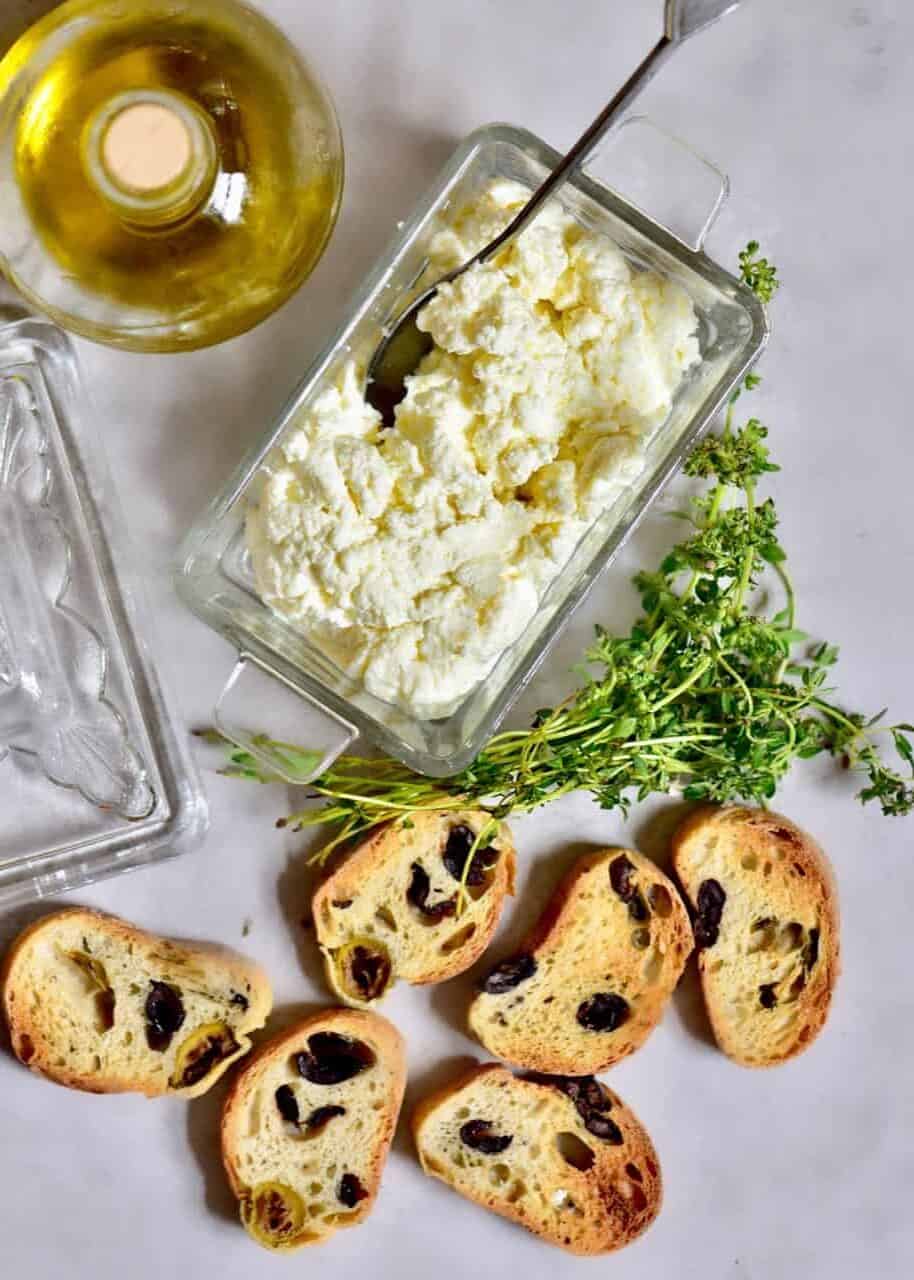 Did you know that learning how to make ricotta cheese is ridiculously simple? What about if I tell you that the entire process needs only three ingredients that you probably have sitting in your kitchen right now? If you want to learn how to make creamy, rich homemade ricotta cheese, then look no further!
I think my love for DIY’s has become fairly apparent on my blog. Whether it is learning something new and a little bit ‘odd’ or getting back to basics, throughout the journey, I’ve realized just how many home staples can easily be made at home with reasonably low-effort, all-natural processes. For example, with this homemade ricotta and other cheeses, you know exactly what is going into your food, and can save you from various additives, as well as money!
Did you know that learning how to make ricotta cheese is ridiculously simple? What about if I tell you that the entire process needs only three ingredients that you probably have sitting in your kitchen right now? If you want to learn how to make creamy, rich homemade ricotta cheese, then look no further!
I think my love for DIY’s has become fairly apparent on my blog. Whether it is learning something new and a little bit ‘odd’ or getting back to basics, throughout the journey, I’ve realized just how many home staples can easily be made at home with reasonably low-effort, all-natural processes. For example, with this homemade ricotta and other cheeses, you know exactly what is going into your food, and can save you from various additives, as well as money!
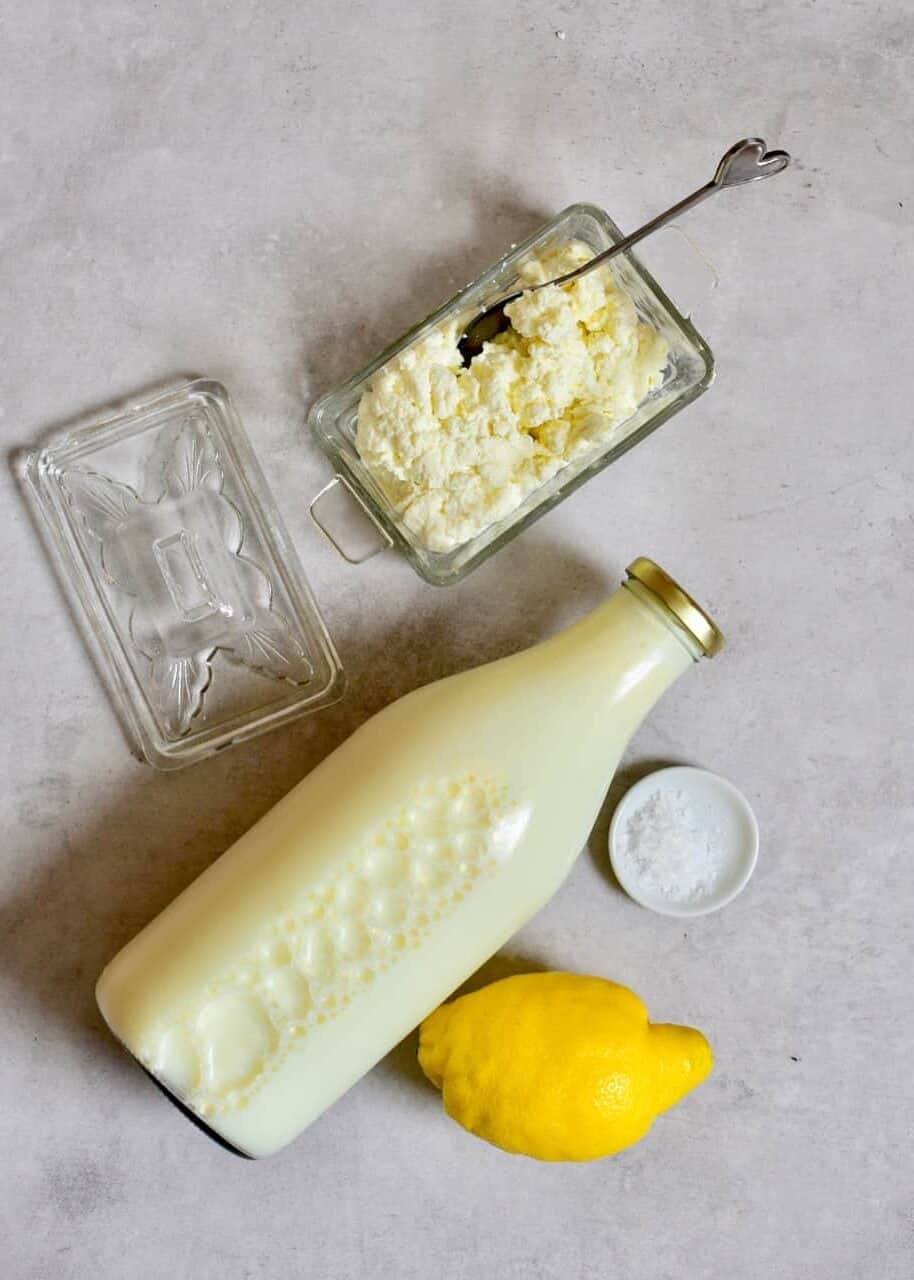 Plus, and I’m not just saying this, I honestly think homemade staples like this fresh ricotta cheese taste far superior to any supermarket option. And that includes this 3-ingredient homemade ricotta cheese. I also already currently have DIYs for other dairy products, including Homemade Labneh and labneh balls, Super Easy Homemade Cream Cheese, and How To Make Paneer At Home as well as How-to: DIY homemade Natural Yogurt.
Plus, and I’m not just saying this, I honestly think homemade staples like this fresh ricotta cheese taste far superior to any supermarket option. And that includes this 3-ingredient homemade ricotta cheese. I also already currently have DIYs for other dairy products, including Homemade Labneh and labneh balls, Super Easy Homemade Cream Cheese, and How To Make Paneer At Home as well as How-to: DIY homemade Natural Yogurt.
How to use your homemade Ricotta cheese
Okay, I’m guessing that if you’ve found your way over to this blog post, then you may very well have an idea of how you’d like to use this homemade ricotta cheese. Just in case you are looking for some inspiration then this is a list of some of my favorite options:- Ricotta works perfectly within Ravioli and other filled pasta dishes, as well as dishes like lasagne.
- It can also be used to make delicious Gnudi, the lighter potato-free version of Gnocchi.
- Use it as a topping for pizzas alongside your other favorite toppings.
- Due to it’s relatively neutral, yet creamy flavor, you can use it as part of some delicious breakfast toasts served with honey/syrup and fruit. ( think peaches, plums, or citrus fruits)
- Alternatively, use it for savory toast, as I have below, with herbs and olive oil.
- It can be used to make various delicious dips to dip crackers or veg into, including hummus, a spinach dip, sweet dips, etc.
- Ricotta can be used in various sweet recipes, including cheesecakes and mug cakes.
- It’s a delicious addition to many summer salads in place of mozzarella.
- Delicious in tarts and quiche’s, alongside some fresh seasonal veg.
- Not to mention ricotta-based pancakes and cakes!!
How to make Ricotta Cheese
The craziest thing about this DIY is how effortless it is to make. When thinking about ricotta cheese, I think about a weeks-long process of leaving milk to curdle and complicated procedures, when in reality, it’s so simple, and would even be a fun family project. All you need is milk, lemon juice ( or white vinegar), and salt. The ‘hardest’ decision is probably what milk to use. I decided to use full-fat (whole) unpasteurized milk. The process works best with whole milk, but can also work with 2%. Avoid using skim and non-fat milk varieties as well as UHT ( ultra pasteurized milk), as the skim types don’t have enough fat to separate into curds, and the UHT milk has been treated in a way that will stop it separating easily. You can use organic milk too, just make sure that it isn’t UHT.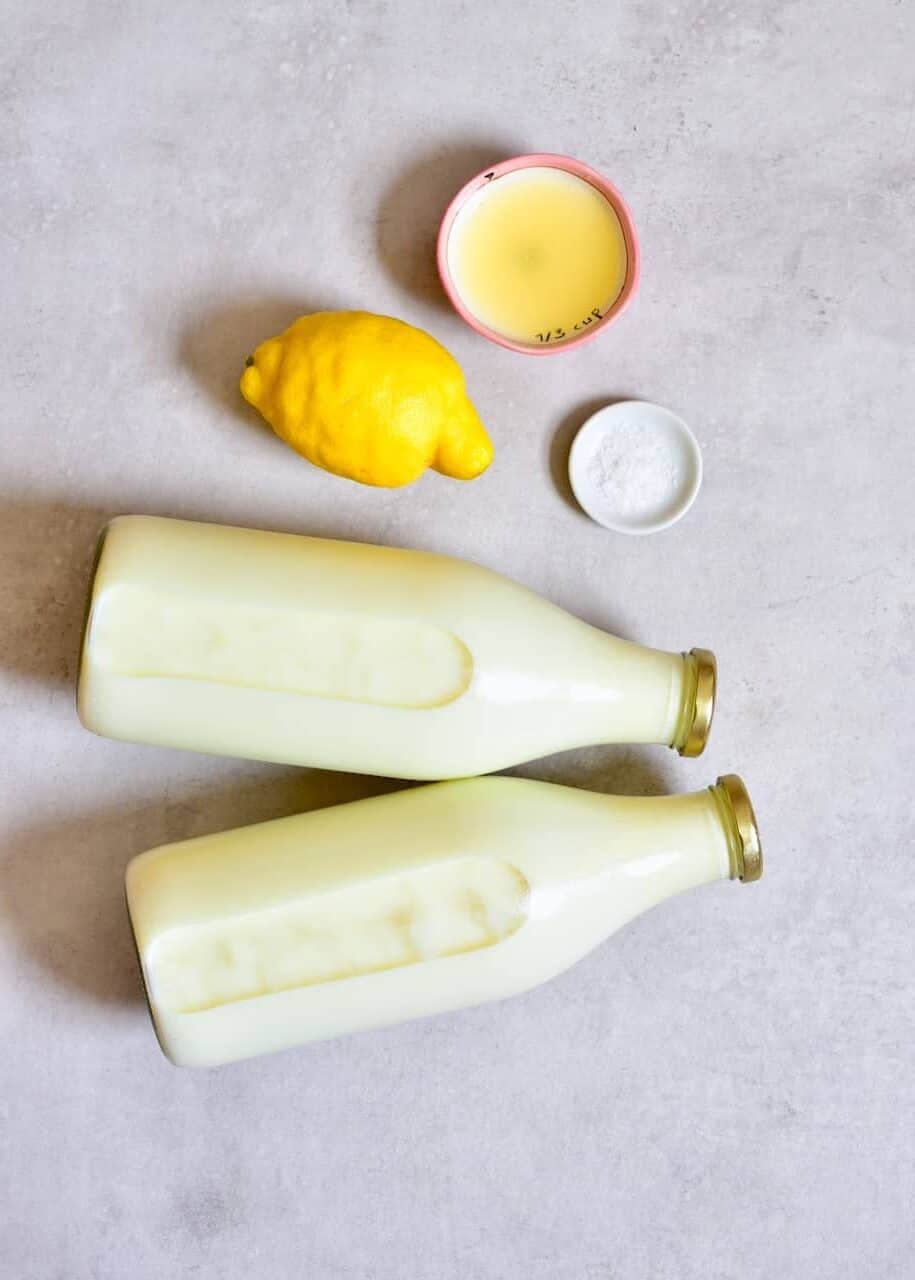 Simply mix your milk and salt at medium heat till just below boiling level, stirring occasionally. You can do this with a thermometer ( boiling level is 212.3F/ 100C), or wait for it to JUST begin to boil and switch off the heat immediately. Add the lemon juice then leave it to rest for around 10 minutes to curdle and separate the curd from the whey.
Simply mix your milk and salt at medium heat till just below boiling level, stirring occasionally. You can do this with a thermometer ( boiling level is 212.3F/ 100C), or wait for it to JUST begin to boil and switch off the heat immediately. Add the lemon juice then leave it to rest for around 10 minutes to curdle and separate the curd from the whey.
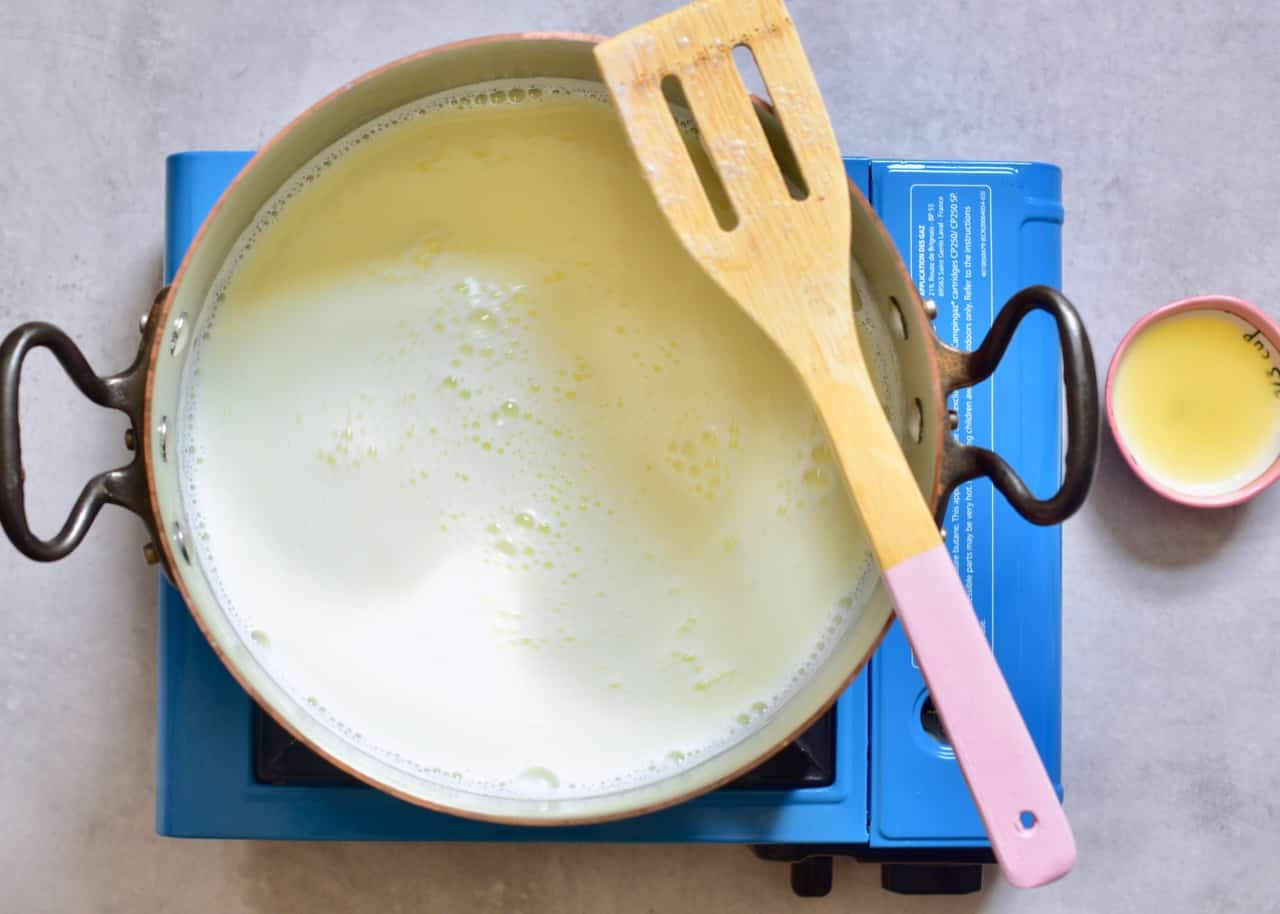
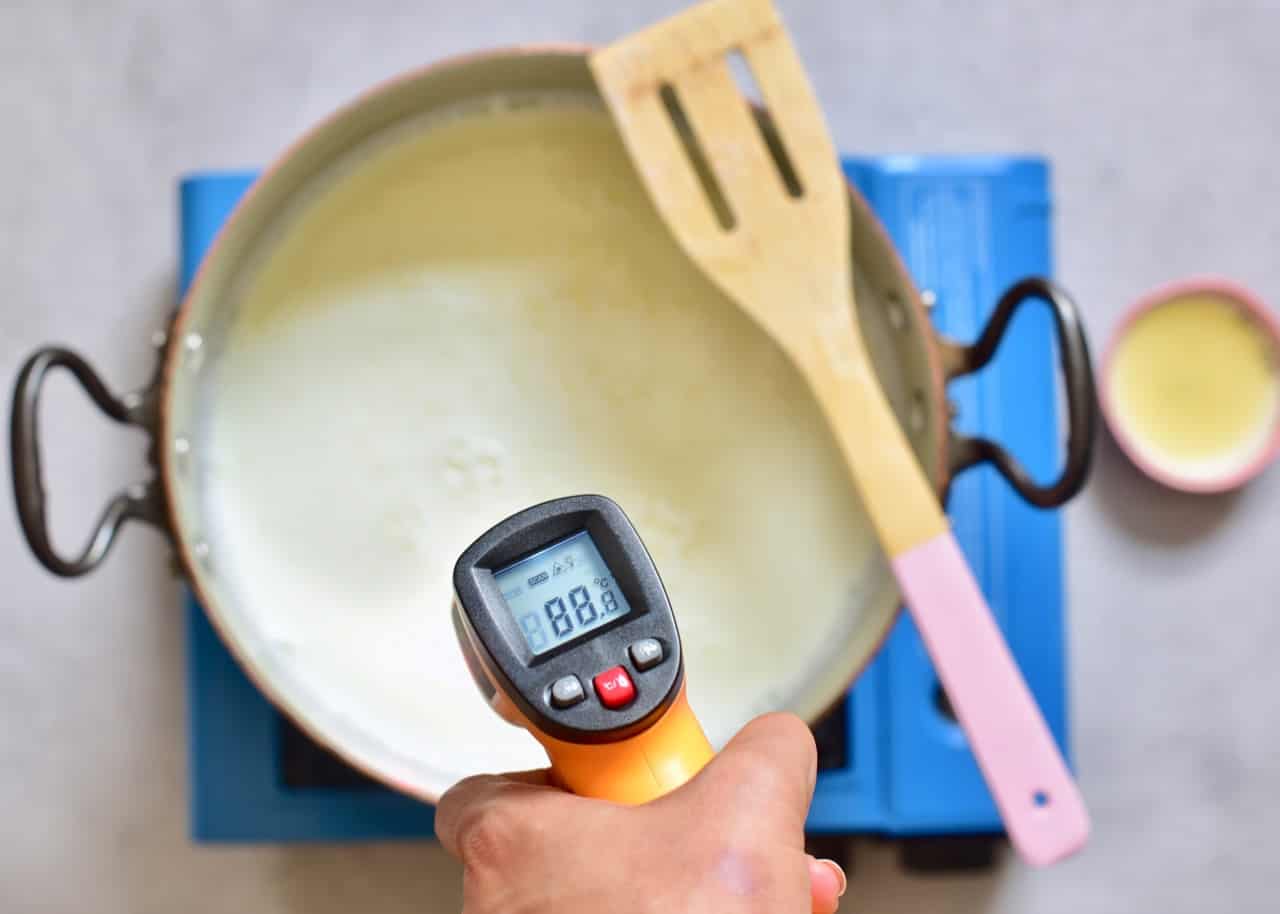
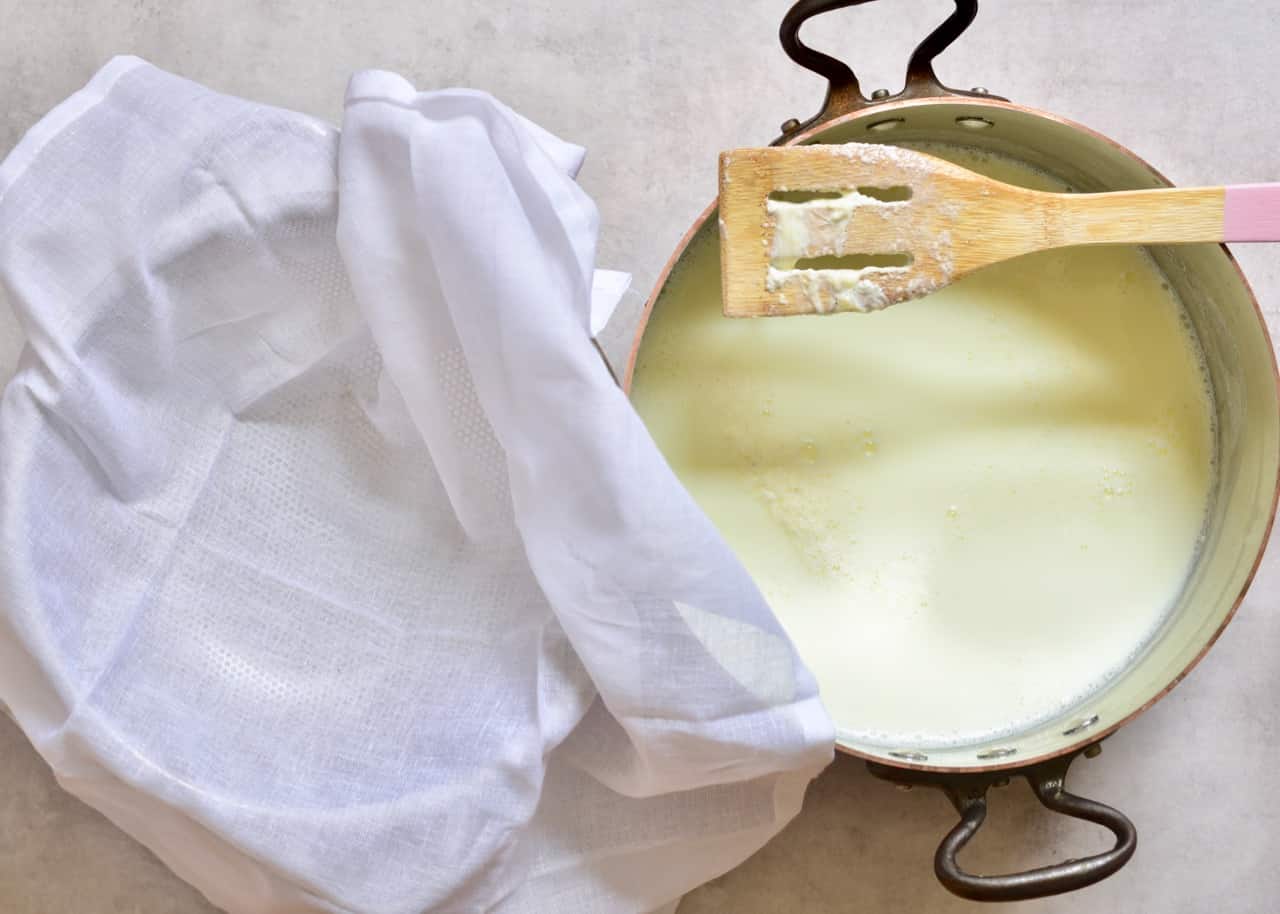 Lay a layer of cheesecloth over a sieve, draining into a large bowl. Pour the mixture over the cheesecloth and leave it to drain the excess liquid. The longer you strain it, the drier your cheese will be. This can be anywhere between 15-60 minutes.
Lay a layer of cheesecloth over a sieve, draining into a large bowl. Pour the mixture over the cheesecloth and leave it to drain the excess liquid. The longer you strain it, the drier your cheese will be. This can be anywhere between 15-60 minutes.
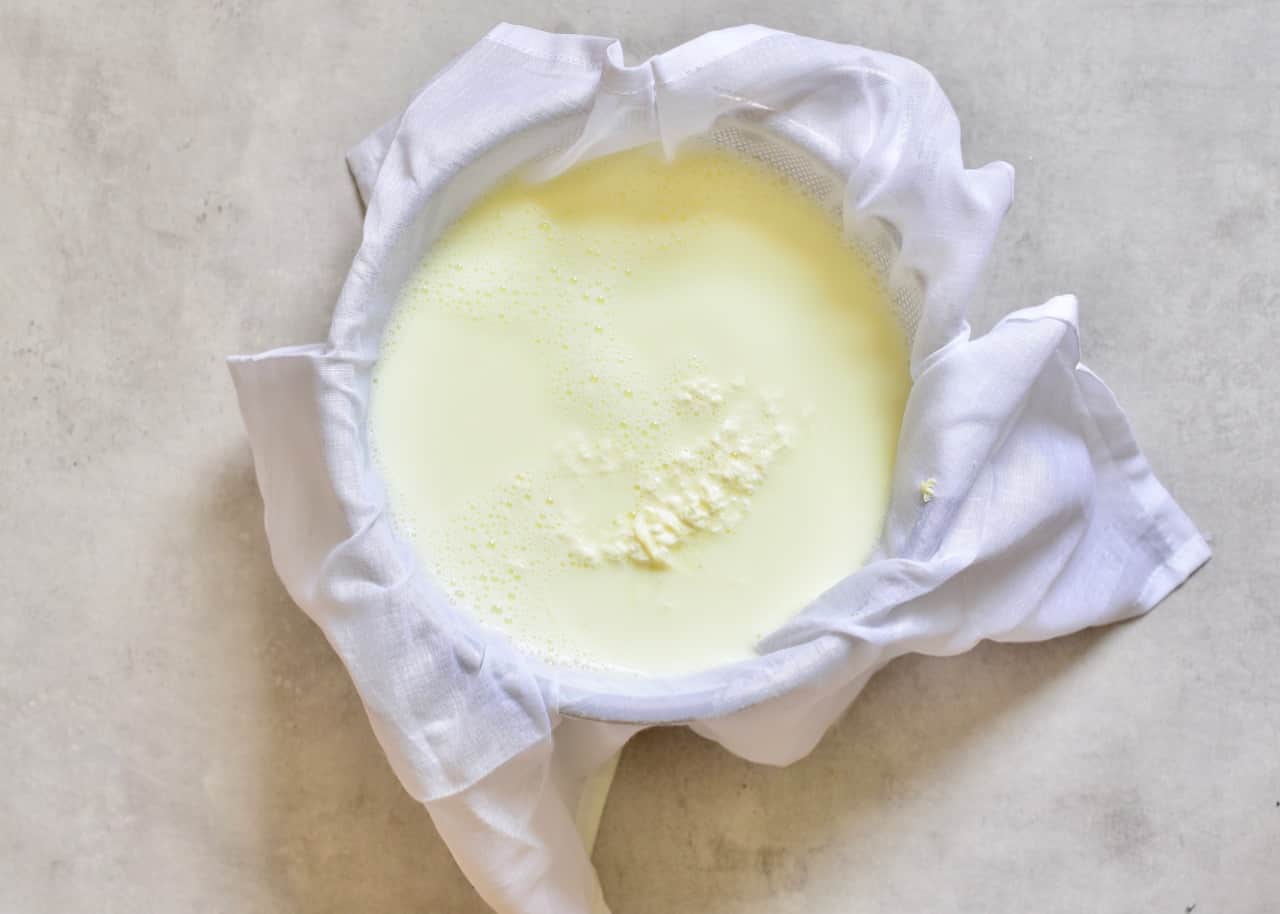
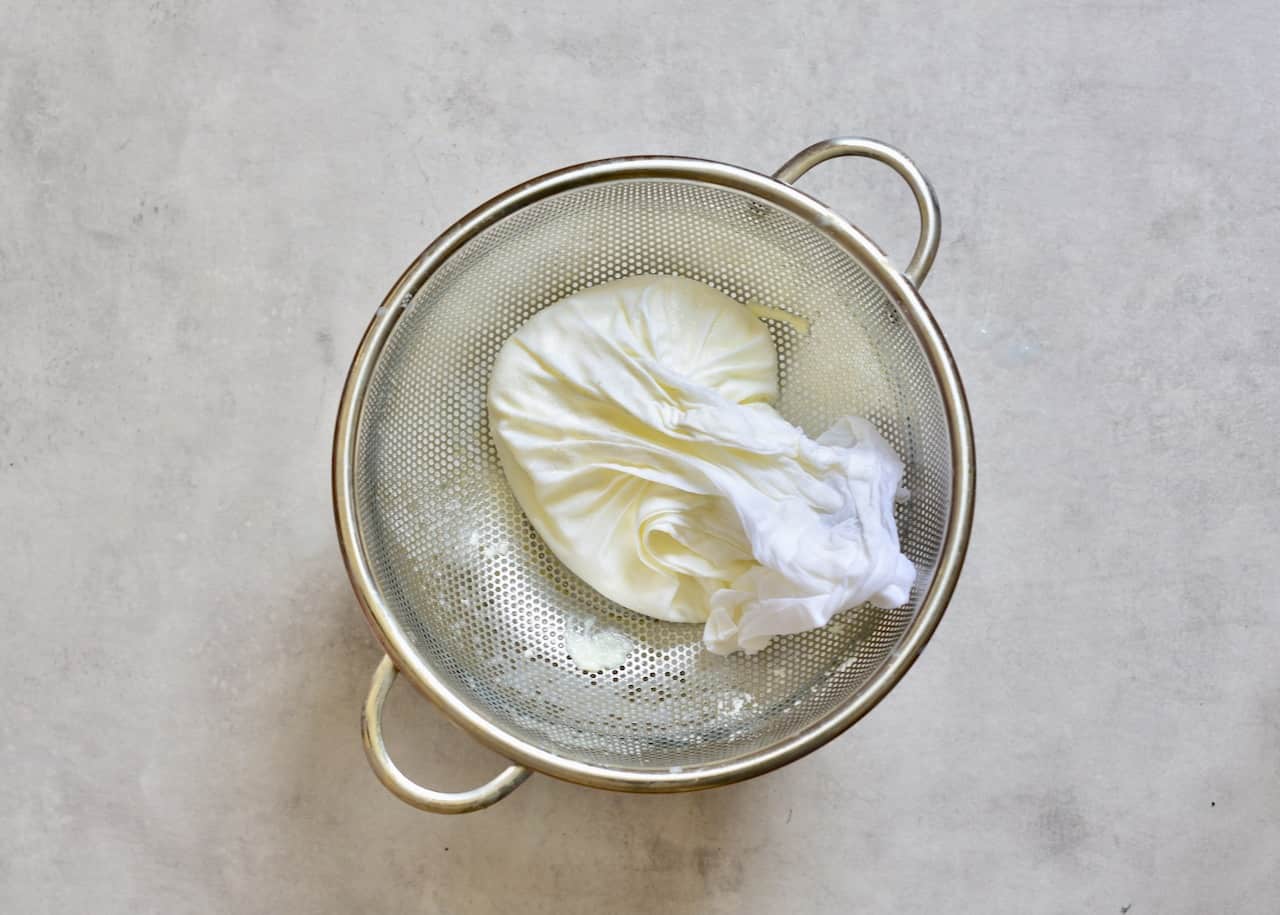
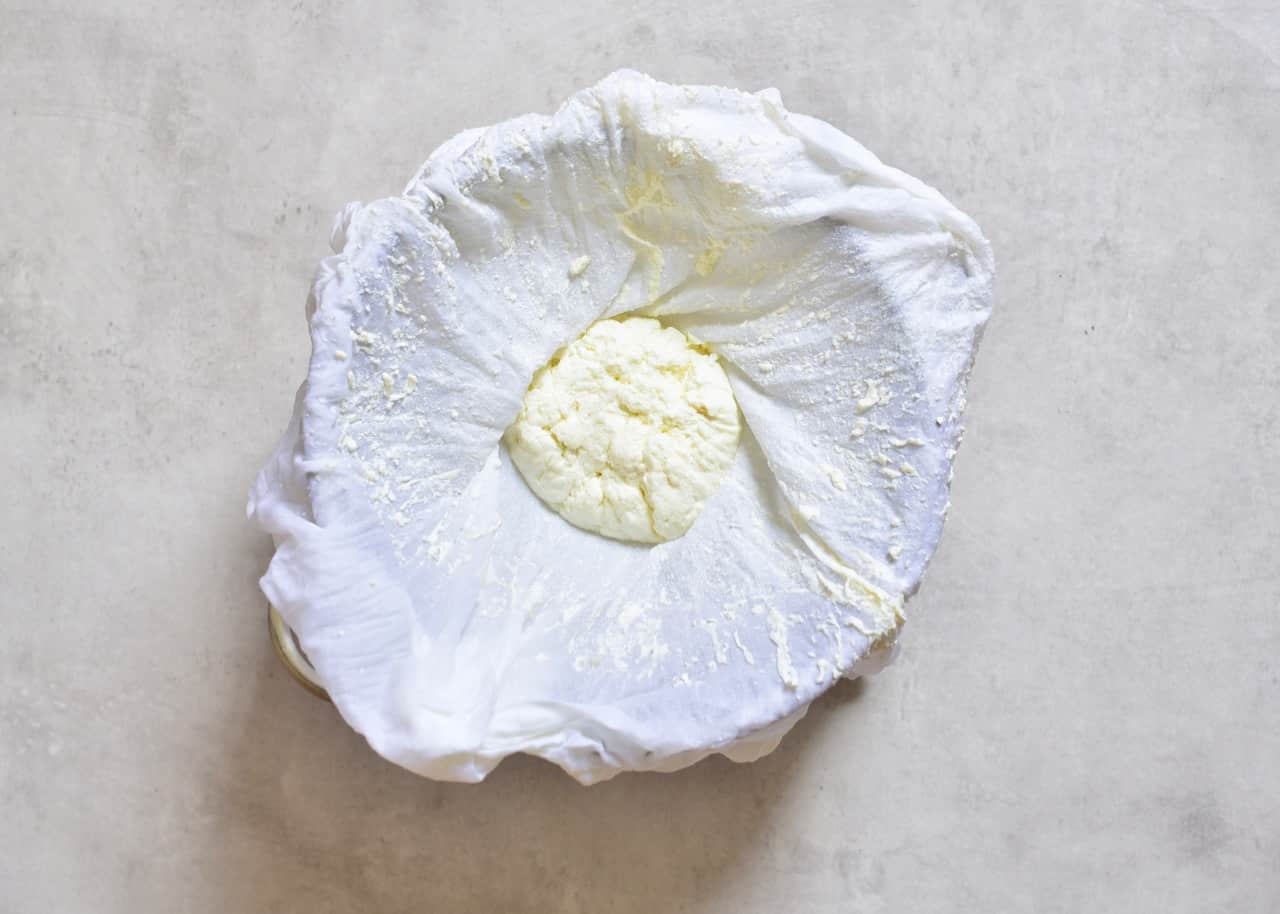 You can store ricotta in an airtight container in the fridge for up to a week.
You can store ricotta in an airtight container in the fridge for up to a week.
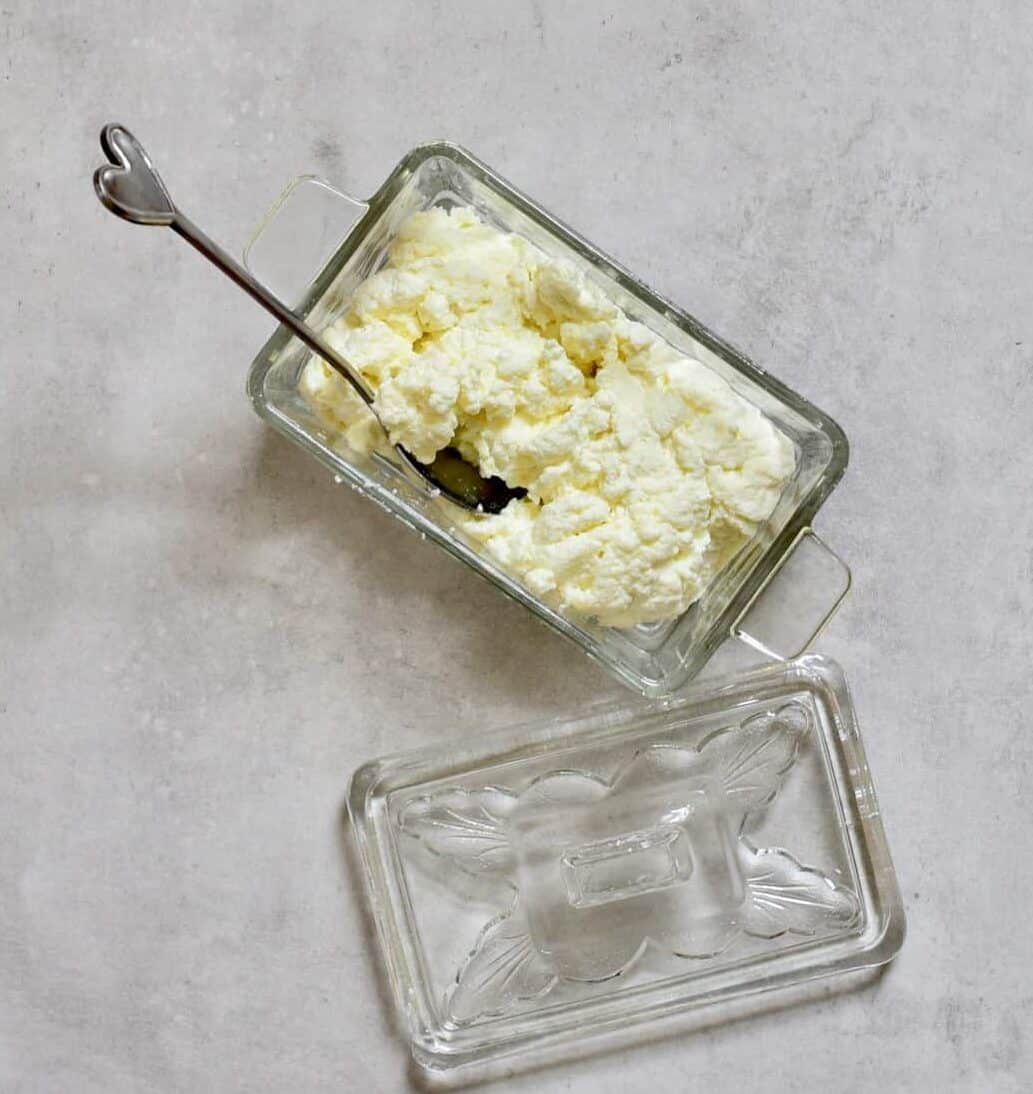
Can You Freeze Ricotta Cheese?
The short answer is, yes, you can freeze leftover ricotta cheese. The Long answer is that there are some caveats to it. As ricotta is a fairly soft, wet cheese, the freezing process will likely change the texture of your homemade ricotta. When freezing the cheese, the moisture within it turns to ice. When defrosted, you’ll find that the container of cheese is more watery, yet the cheese itself is likely dried and more crumbly than before. This is because the whey and curds separate during the freezing/thawing process. Luckily, there are a few ways you can go about decreasing the changes as much as possible:- Use airtight containers to store the cheese; Insulated containers are even better. If you want to use a freezer bag, then make sure it is thoroughly airtight. I avoid using plastic wrap in the process, to cut down on plastic usage.
- You can press some of the excess liquid out of the cheese before placing it in the freezer, using some kitchen towel to soak up the excess liquid.
- It’s also best to stir it just before freezing too.
To Thaw:
Only thaw your frozen ricotta cheese in the fridge, not at room temperature ( as it will attract bacteria), for around 5-6 hours before using it. Once again, there are a couple of steps you can take to help revive your ricotta at this point too.- I would suggest stirring the cheese often, while it thaws. This will help to bring the curds and whey back into a singular mixture.
- You could also blend the cheese, once thawed, and then drain the excess liquid.
How To Use The Thawed Ricotta:
Frozen and thawed ricotta is best used within cooked dishes, rather than in a recipe where the texture is essential, and it’s the star of the plate. Lasagnas and pasta dishes could be a good use, for example. And lastly, don’t re-freeze the cheese once it is defrosted. It will be okay for 2-3 days once thawed. I love seeing your recreations, so if you give this recipe a go, then feel free to tag me @Alphafoodie!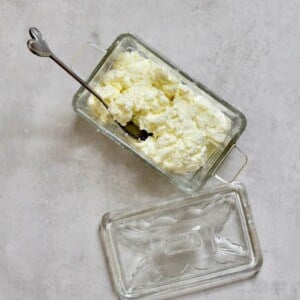
Homemade Ricotta Cheese
With only 3 ingredients and half an hour of your time, you can whip up homemade ricotta cheese that is creamy, tangy and absolutely delicious!
Equipment
Ingredients
- 2 litres fresh full-fat milk unpasteurised (or pasterised)
- 1/3 cup lemon juice
- 1 tsp salt
Instructions
- Simply mix your milk* and salt at medium heat, till just below boiling level, stirring occasionally. You can do this with a thermometer (boiling level is 212.3ºF/ 100ºC), or wait for it to JUST begin to boil and switch off the heat immediately.
- Add the lemon juice** then leave it to rest for around 10 minutes to curdle and separate curd from the whey.
- Lay a layer of cheesecloth over a sieve, draining into a large bowl. Pour the mixture over the cheesecloth and leave it to drain the excess liquid.
- The longer you strain it, the drier your cheese will be. This can be anywhere between 15-60 minutes.
- You can store ricotta in an airtight container in the fridge for up to a week, or within the freezer for two months (read the post for the correct way to freeze and thaw the cheese)
Video
Notes
*I decided to use full-fat (whole) unpasteurized milk. The process works best with whole milk, but can also work with 2%. Avoid using skim and non-fat milk varieties as well as UHT ( ultra-pasteurized milk), as the skim varieties don't have enough fat to separate into curds, and the UHT milk has been treated in a way that will stop it separating easily. You can use organic milk too, just make sure that it isn't UHT.
** You can also use white vinegar instead of lemon juice
Note: This homemade ricotta cheese post has been updated as of June 2020 to reflect new information known, tips, etc.
Nutrition
Serving: 1Serving, Calories: 309kcal, Carbohydrates: 25g, Protein: 16g, Fat: 16g, Saturated Fat: 9g, Cholesterol: 50mg, Sodium: 797mg, Potassium: 681mg, Sugar: 26g, Vitamin A: 810IU, Vitamin C: 8mg, Calcium: 565mg, Iron: 1mg
Nutrition information is automatically calculated, so should only be used as an approximation.

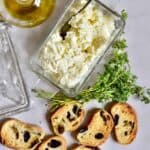











Hi
I made the cheese .but i have a question; what can i do with separated whey???
Hi Shahla,
You can add the whey to smoothies and juices, for a protein and nutritional boost. It can be used in soups, in place of stock, or even combined with homemade vegetable stock.
Whey liquid works well within baking recipes, including pancakes, bread, muffins, etc.
There are many other ways whey can be used, I hope this helps. 🙂
I am little confused.
What’s the difference between paneer(cottage cheese) and Ricotta
Hi Simran,
Ricotta is smooth and slightly grainy whereas cottage cheese is lumpier and contains more liquid. And paneer is known as the Indian cottage cheese but it still a different type of cheese. I hope this helps.
The whey is also great for watering plants!
Thanks for the tip, Jamie!
I have made ricotta this way many times and it is good, sometimes with 1-2 cups of cream if on hand (lemon juice is better than vinegar IMO, sweeter)— but i alternate between this and a combo of 4 parts whole milk, 1 part cream and 3/4 to 1 part buttermilk with a 1/2 tsp of salt for every 4 cups of milk used. It produces the absolute creamiest ricotta, and it is easier- I add all ingredients into the pot, stir others and there for the first few min- then wait and don’t stir at all until it is starting to curd up, the temp should be around 190, there should be a nice and thick film layer on top, when it begins to crack up real good, give it one gentle stir and turn the heat as low as it goes, let it cook another couple mins and remove from heat. Let it sit 20 to 60 mins, time permitting and then scoop our with a slotted spoon. I insist you try this- it is AMAZING. But of course, requires more ingredients. Love your website. Hope you will add more recipes that include using leftover salted/acidic whey. Bc I have so much leftover constantly and find certain things more suitable than others- but lemon juice whey to generally over-sour savory recipes.
Thank you so much for all the tips! I’ll definitely try add more Whey recipes to my list!
Hi! Thank you for this. Does it work with full fat lactose-free milk?
Hi Sam,
Yes, you should be able to use lactose-free milk for the recipe. I hope you give this recipe a try.
Hi
I plan to make this for my cheesecake
So I wanted to know the recipe says it makes 1 1/2 cup ricotta cheese
That would be how many grams
I m a novice. Homemaker
So don’t want to spend on expensive cheese like to diy it
Hi ,
Can I make ricotta using non dairy milk ?
Thank you
Hi Nadia,
Yes, you can make ricotta using non-dairy milk. I am working on a recipe that I will post very soon. Stay tuned.
Thank you so much!! I made the ricotta cheese today, and it turned out great!!
Hi Ella,
Thank you for your comment. So glad you’ve tried the ricotta cheese and hope you give some of the other recipes a try too. All the best 🙂
Hello,
I was wondering if i could use lime juice instead of lemon juice.
Thank you
Hi Meg, you could use lime juice or white vinegar if you don’t have lemon juice.
I hope you give this recipe a try.